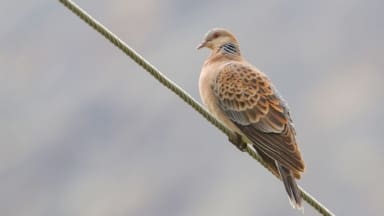
According to Defra’s latest data, in 2023, the combined bird species indices for the UK and England continue to show an overall decline. Since 1970, the indicators have declined by 16% in both the UK and England. Both indicators declined most between the late 1970s and the early 1990s – driven for the most part by steep declines in woodland and farmland birds. Those two indicators then remained relatively stable or showed shallow declines until the mid 2010s, before in recent years showing a slightly accelerated downward trend. Declines are due to habitat loss, pesticide use, climate breakdown and bird flue.
In the UK, all wild bird species declined by 2% in the short term (the 5 year period between 2018 and 2023). In England, this drop was much steeper, with a decline of the all-species index of 7% in the same period. This decline is particularly associated with steep short term declines observed in woodland and farmland birds, although with the exception of UK upland birds, UK seabirds and UK water and wetland birds, all bird groups show a decline in this period.
The ‘all bird species’ index has declined by 16% in both the UK and in England since 1970. Following an initial upturn, this has show a shallow decline between the mid 1970s and the early 1990s. The index then remained relatively stable until 2015, since when it has shown a modest but continuous decline, with the UK indicator declining by 2% and England by 7% in the 5 years since 2018.
Declines have been observed across all species indicators, each composed of more than 100 species trends, masking variation in the different habitat indices and in individual species trends.
- Farmland bird populations have declined severely – by around 61% over the long-term and 9% in the short term, with declines being stronger for farmland specialist birds than generalists. Examples of farmland birds in strong long-term decline includes turtle dove, grey partridge, tree sparrow, corn bunting and starling, although some (corn bunting for example) show small increases in recent years.
- Woodland bird populations have declined severely by around 35% over the long-term and 10% in the short term. Long term declines have been driven by woodland specialist birds but there has also been a sharp downturn in generalist birds over the past five years. Examples of woodland birds in strong long-term decline include willow tit, capercaillie, lesser spotted woodpecker and spotted flycatcher.
- Breeding water and wetland bird populations have experienced little to no change over both the long term and short term (except for England, where they declined by 7%). However, this masked considerable variation in the different habitats with, for example, birds in reedbed habitats increasing. Examples of breeding water and wetland birds in strong decline include yellow wagtail in the long-term and lapwing, coot and tufted duck in the short term.
- Seabird populations in the UK have declined in the long term (25%) and shows signs of stability in the short term. The England seabird index, which is comprised of a slightly different suite of species, shows little or no change in both the long and short term. Examples of seabirds in strong decline include Arctic skua (all UK birds are in Scotland) and herring gull.
- Upland bird populations in the UK have declined in the long term (7%) and experienced little to no change in the short term. In England, they have experienced little to no change throughout. Examples of upland birds in strong decline include peregrine falcon, redshank, and whinchat.
- Most Wintering waterbird trends are not included in the all bird species indicator as this indicator is based on wintering populations, whether or not there are also breeding populations in the UK. These wintering populations have increased markedly in the long term (90%), but this trend changed around 2000 and is now showing a steep short-term decline (8%). No wintering water birds are in strong decline long term, but over the short term examples include Bewick’s swan, scaup and Icelandic greylag goose.

